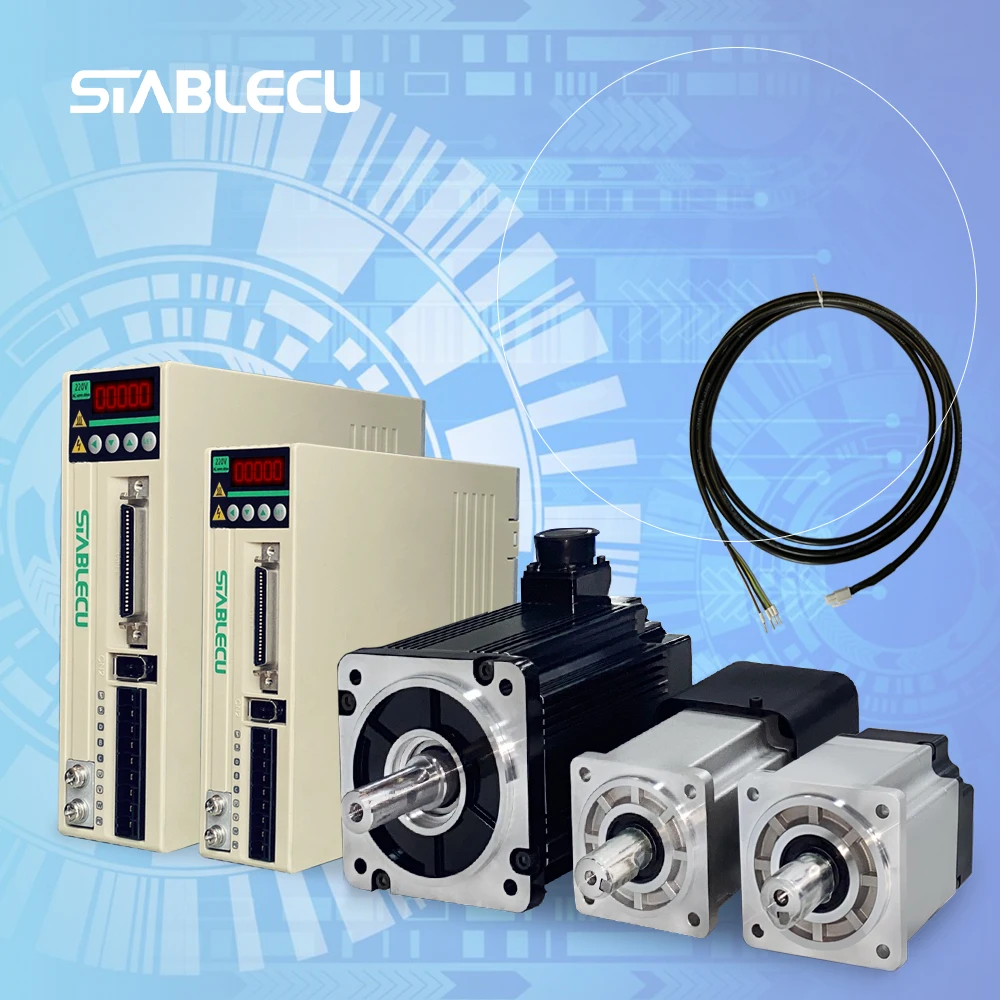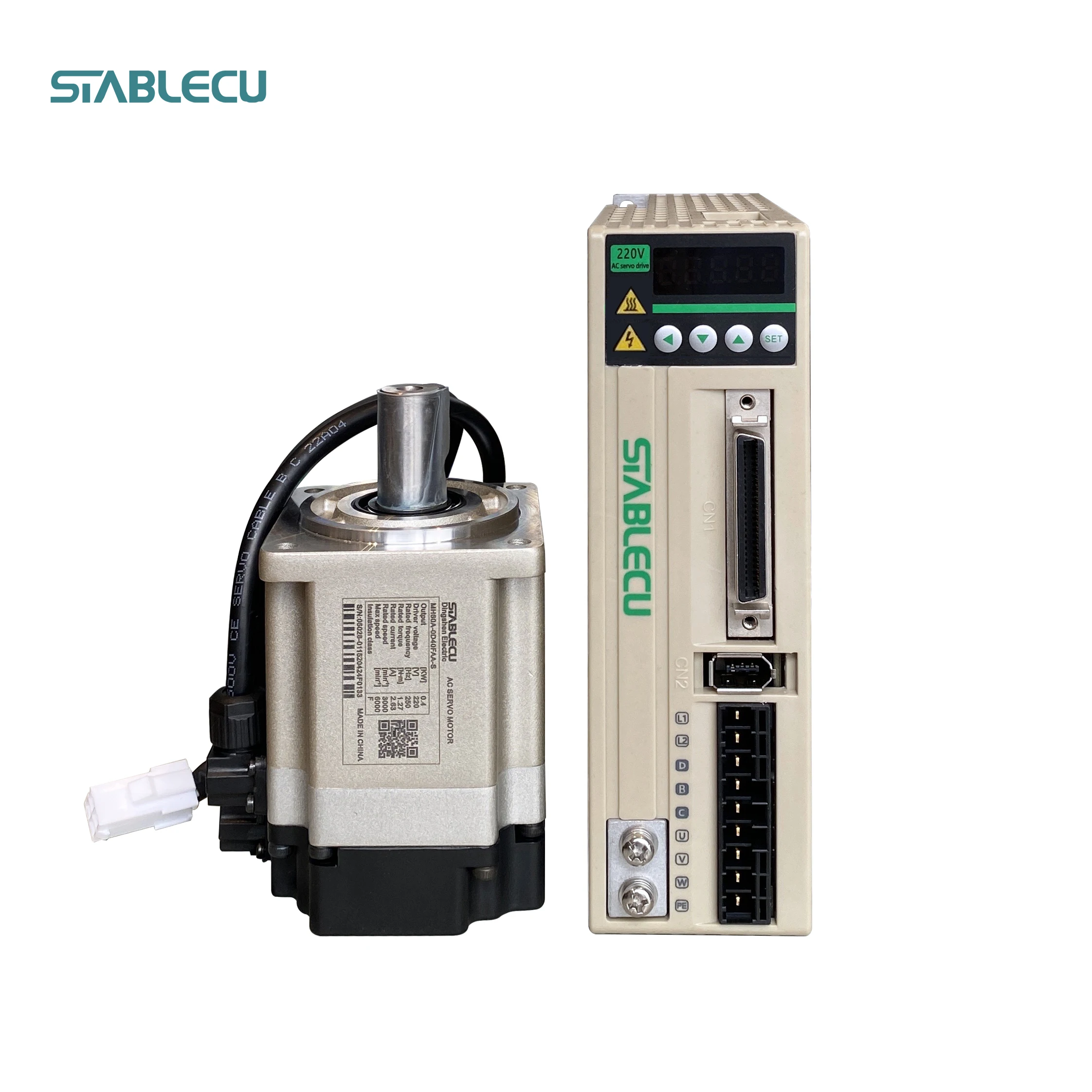Quid est AC ductor et eius applicationes areas
Intelligentia Impulsoribus AC: Summarium
Impulsoribus AC, saepe ut AC impetus nominantur, sunt componentes necessariae in operatione motorum electricorum. Functio eorum est per commutationem energiei electricae alternantis (AC) ad regulandam velocitatem et torquem motorum electricorum, ita perficientes eorum operationem et efficientiam. Haec commutatio fit per converteres electronicos potentis, permitte nt praeceps control super functiones motoris, sicut velocitas et directio.
Hi impulsoribus sunt compatibiles cum variis generibus motorum AC, inter quae includuntur motores inductionis et motores synchroni. Per administrationem voltii et frequentiae praebendae motoribus, impulsoribus AC habent partem magnam in meliorem efficientiam operationis motorum. Hoc potestas est maxime importante in contextu industrialem ubi constans activitas motoris et performantia critica est.
Motore AC sunt indispensabiles in variis applicationibus industrialibus propter eorum facultatem efficiendi significativam conservationem energiae, praebendo praecisum controllem motoris et minuendo usum et abrasionem machinamentorum. Per exemplum, in ambientes fabricationis, motore AC certum faciunt ut motores operate at optimis velocitatibus pro diversis operibus, reducendo consumptionem energiei usque ad 15%. Praeterea, per impedientem inutilem tensionem in componentibus mechanicis, prolongant vitam aequipamentorum, denique minuentes sumptus maintenance.
Applicationes Motorum AC in Variis Industriis
Motore AC ludunt partem praecipuam in multis applicationibus industrialibus, praesertim efficiendi et productivitatis incremento. In sectoris fabricationis, sunt instrumenta in automatisando variis processibus, ita productionis taxas magnopere augentes. Per regulandam velocitatem et torquem motorum electricorum, motore AC concedunt praecisam gubernationem, necessariam in lineis conglutinationis et operationibus complexis ubi constantia et efficacia sunt cruciales ad conservandum competitivum advantage.
In campo roboticae, motore AC multum adhibent ad productivitatem et exactitudinem auge ndum. Exempli gratia, permittere praecisum motum brachiorum roboticorum usor um in lineis conglutinationis, sic curantes diligentes operationes conglutinationis et minuentes errorem humanum. Hoc universalem efficientiam operationis auctat dum qualitatem productorum fabricatorum servat.
Praeterea, AC impulsores critici sunt in systematibus Calefactionis, Ventilationis, et Aeris Conditionatus (HVAC), ubi iuvant efficientem controllem climatis conservare. Per modulationem velocitatum ventilatorum et performance compressoris, AC impulsores optimam consumptionem energiae praebent, reductionem dispendii energiei facientes et inferiores costus operationales consequentes. Haec facultas est essentialis non solum in locis industrialibus sed etiam in applicationibus residentialibus et commercialibus ubi controlle climatis est crucialis.
Motore operatores AC inveniunt etiam significativam applicationem in industria transportationis, praesertim in vehiculis electricis et systematibus motoribus conventionalibus. Relationes indicant quod usus operatorum AC potest meliorem efficientiam energiae per usque ad 15% praebere, ita viam vehiculorum electricorum prolongando et consumptio carburantis in systematibus conventionalibus minuendo. Tales progressiones subnectunt importantiam operatorum AC in promovendo solutiones transportationis sustinibiles et efficientes. In universum, operatores AC sunt indispensabiles per varias sectoris, productivitatem, praecisionem et efficientiam energiae fovendo.
Genera Operatorum AC et Eorum Caracteristicae
Intellegere genera AC motorum curatorum est cruciale pro eligendo rectam solutionem pro certis industrialibus applicationibus. Variable Frequency Drives (VFDs) sunt praestantia genus notum pro regulando velocitate et torquere motorum per frequentiam mutationes. VFDs operantur per convertendum fixam incidentem voltaginem et frequentiam in variabiles exitus, ita ut praeceas motorum controllem permitteant. Eorum applicationes extendunt per industrias ubi variae operationales velocitates sunt necessariae, inter quae sunt in ventilatores, pompa, et conveyor systemata.
Servo Motor Curatores sunt altera categoria AC motorum curatorum quae intendunt ad praecisionem controllem, eos facientes indispensabiles in automatione. Hi curatores utuntur in systematibus requirientibus accuratam positionem, velocitatem, et torquem, sicut in CNC machinis et robotic brachiorum motu in manufacturandi lineis. Eorum facultas praebendi praecisam motorum controllem certificat ut operationes permaneant efficientes et fideles, ita ut productivitas augescat.
Motores Servo CD Exarati, quamvis sint distincti ab traditis motoribus AC, praecipue propter structuram suam unicum et usus notantur. Uti pennillis et commutatore utuntur ad cursum fluminis et celeritatem motoris regendam. Hoc designium differt ab systematibus AC qui saepius inductionem electromagnetica utuntur. Motores DC exarati saepe inveniuntur in applicationibus specialibus quae facilitatem controllis et rationem petunt, sicut in robotica parva et apparatis domesticis. Non obstante diversitatibus suis, omnes isti conductores communem habent elementum praecipuum processum controllem in variis casibus promovendo.
Elementa Principalia Conductorum AC et Functiones Eorum
Efficax operatio AC motorum pendet a pluribus componentibus principalibus, quae singulae funguntur parte cruciali in optimo motus operatione. Processores potentiae, seu modulatores potentiae, constituunt columnam mediam per conversionem potentiae input in voltam et frequentiam ad motorem convenientem. Haec instrumenta continent varietatem converterum electronicorum potentiae, ut sint AC-AC, AC-DC, et DC-AC unitates. Praecepte, in applicationibus industrialibus, processores potentiae permittere efficientem controllo velocitatis motoris, operationes facientes ut consumptio energiei minuatur dum perfectio servetur.
Controlatores et sensores essentiales sunt ad monitorandam performance motoris et ad facilitandam praecisam controlum feedback. Controlatores, saepe utentes microprocessore aut DSP, regunt fluxum potentiae per processum mandatorum input simul ac sensorum data. Sensores praebent feedback tempore reali de statu motoris, certiores fiendo quod systema accurate respondeat mutationibus in conditionibus operationis. Haec integratio est critica in processibus postulantibus exactas mutationes velocitatis et torquem, sicut in robotica et systematibus conveyor.
Inversores sunt pivotalis in conversione DC retro in AC potentiam, functio necessaria ad operationem motorum AC. Illi operantur per usum transistorum, IGBTs, aut MOSFETs ad gestionem conversionis, modulantes exitum ad consequendum voltages variabiles et frequentias. Haec facultas adjustandi exitum electricum effective significat quod motores possunt operari ad varias velocitates, necessarium est pro applicationibus sicut systema HVAC aut disposita electronica, praebens versatilem et efficientiam energie per varias necessitates industriae.
Producti: AC Driver Alta Efficiencia
theAC Servo Motor Alta Efficiens cum Driver RS485 Modbuspraebet praestantiam exceptionalem per suam constantem torquem et exitum celeritatis. Usque ad 3000RPM, sustinet varios modos controlis, sicut positionem, velocitatem et torquem, faciens eum versatilis pro variis applicationibus industrialibus. Motor utitur protocolis communicationis aversis, inter quae sunt Modbus, Canopen et Ethercat bus, certificando integrationem sine intermissione in systema diversa. Multiplices protectiones, sicut contra nimiam velocitatem, nimiam voltam et nimium amperagium, certificant operationem fidam etiam sub conditionibus exigentibus.
theOriginalis AC Driver Unitas Fodiendiest ingeniosus ad praestantem operationem in operibus perforandi. Cum optionibus virium ab 15KW usque ad 18KW, coniungit robur efficacium cum praecisa dominatione. Praebet pompam et motorem capacem centum litrorum et turbine celeri 60mm 400W et 750W motoribus servis, aptis ad ambientes exigentes. Capacitates multiformes dominationis eius assequuntur solutiones flexibiles pro variis necessitatibus perforandi, accelerando et accuratius operandum.
Futura Tendentia in Technologia AC Motricis
Integratio motorum AC cum technologiis IoT praeparat iter ad redefinienndam connectivitatem, faciendo possibiles monitas in tempore reali et maiorem efficientiam. Hoc progressus permitit conservationem praedictivam et optimisationes systematis quae possunt ducere ad magnas economias operationales. Praeterea, progressus in technologiis efficientiae energie impellunt motores AC ad attingendas novas normas, quae pollicentur reductionem consumptionis energie per notabiles margines. Haec inventio non solum contribuit ad economiam pecuniarum sed etiam congruit cum globalibus effortibus sustinabilitatis.
Praeterea, emergentia systematum intelligentium controlis revolutionizat technologiam motorum AC. Per inclusionem controlis adaptivae et potentiarum discendii machinalis, haec systema possunt ad exigitia operationis et condiciones ambientales dynamice accommodare. Haec accommodabilitas confirmat optimum operationem et parat viam ad systema maius autonoma et intelligentia, pollicens futurum ubi motores AC non solum sunt efficientes sed etiam sponte respondentibus ad mutationes necessitatum.

 EN
EN
 AR
AR BG
BG HR
HR CS
CS DA
DA NL
NL FR
FR DE
DE EL
EL HI
HI IT
IT JA
JA KO
KO PL
PL PT
PT RO
RO RU
RU ES
ES SV
SV CA
CA TL
TL ID
ID SR
SR UK
UK VI
VI SQ
SQ HU
HU TH
TH TR
TR FA
FA AF
AF MS
MS KA
KA BN
BN LA
LA TA
TA KK
KK UZ
UZ

